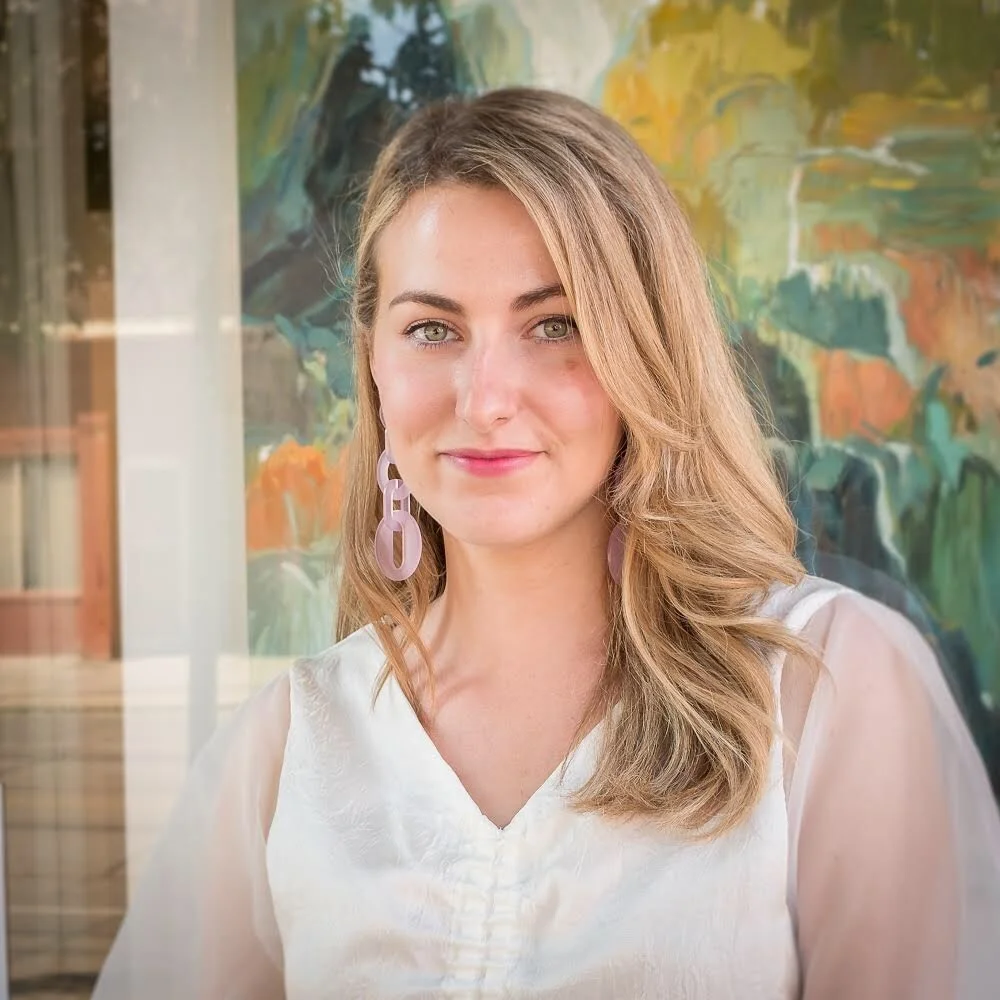Tatum Dooley on selling art on Instagram to benefit artists
Interviewed by:
Nando Alvarez-Perez
Published in May, 2020 in the early days of the Coronavirus Pandemic. Issue 3 of Cornelia was virtual only.
This interview took place on April 20th, 2020, and has been edited for clarity.
Nando Alvarez-Perez: How are you doing? I'm imagining you're as at home as we are.
Tatum Dooley: Yes, I am very much at home. It's funny because I am self-isolating, and taking it pretty seriously, so I don't know what's happening in the rest of the city. Toronto has shut down all non-essential services so everything we have open is just drugstores and grocery stores. I think everybody's staying inside right now.
NAP: Yeah, same here.
TD: Overall though, I'm good. I have said this before to people when they're like, "Oh, you're taking on so many projects." I'm able to work from home, and I'm also mentally feeling pretty stable. Because of those things, I feel like I can take on projects that help other people who I know are struggling more economically or need a little boost of goodwill. I feel like I can take some time out of my life to try to be helpful, but also all these projects come around and help distract me.
NAP: Yeah, I'm feeling really lucky. I'm in the midst of editing this next issue of Cornelia, and I'm still teaching for another three weeks. BICA exhibitions and events are on hold, but I'm very happy to have the magazine to work on. So can you take a minute to tell us a little bit about yourself?
TD: Yeah, I'm Tatum Dooley, I'm a writer and curator from Toronto. A year and a half ago now I started an Instagram account called Canadian Art Forecast. I didn't start out with many assumptions or goals for what it would turn into, all I wanted to do was post a painting or a piece of art every day–something that I liked, made by an emerging artist in Canada that I thought wasn't getting enough attention. It really resonated with the community in Canada–it gained a lot of followers quickly and I had people messaging me that they were learning about new artists through the account, so I've kept it up. I’ve been consistent about posting one artist a day. And the Instagram account has led to invitations to curate in physical spaces. A few galleries saw what I was doing and were impressed with the scale of the project but also saw that everything I post has a particular perspective, I pick art that I like. I do have a lot of thoughts and ideas about the purpose of that account in the future, and what I want to do with it.
NAP: If it's not a secret, we'd love to hear!
TD: No, it's not a secret! I'm often asked about what I see in the future for art—like, do I think that it can live online? Is Instagram the answer? Are galleries going to be obsolete? And I'm always kind of horrified by that. I don't want to be a digital art gallery. This Instagram is a starting point, it's not the endpoint for anything. I see it as a tool for accessibility for art: people can discover artists in the privacy of their own home on a screen that's easily accessible to them. And there's no labor involved on their behalf, there isn't even a lot to read. I'm not making it theoretical, the only thing that you have to think about is, "Oh, do I like that piece of art or not," or, "Oh, that's an artist I don't know, I'm gonna click the tag and follow them." For me it is all about the ease of being able to access the art world. I think that historically the art world is often designated for certain artists, who are maybe part of a certain socioeconomic class, or only accessible to people of a certain education. I grew up going to public art galleries and museums, but I never knew I could just go into a private art gallery in the city. I had to have somebody tell me that when I was in my early 20s. So this Instagram account–I know this maybe sounds a little blown out of proportion–I do think that there is something to it. And then when I curate in physical spaces people will come to the openings who I don't usually see on the opening circuit, and they'll say, "I just follow you on Instagram and I saw that you're having an opening so I thought I'd come!" My aim in my writing and my curating and this Instagram thing is just to be approachable.
NAP: Approachability is a major Cornelia and BICA tenet too.
TD: Now, as I've been thinking about selling art, I’m thinking about how that can be made more approachable to people that have never bought art before. There are really simple things you can do, like putting the price right upfront so that people don't have to have that awkward conversation of inquiring about how much something costs and then having to recoil when they find out that they can't afford it. If I walked into a shoe store and they didn't have prices listed with the shoes, I would walk back out. Why should galleries be different?
NAP: But so let's back up a bit. You're currently running a sale on your Instagram account of work by Canadian artists. Everything is under $500 and all of the proceeds go to the artists. What inspired you to start the sale? And why do you think it's important to help artists make direct sales?
TD: Well, the community that I'm in is filled with artists. I saw how rapidly the virus had affected them economically, as well as, you know, sometimes physically with not being able to get to their studios or having to quarantine by themselves. Of course it affects every community but this is the community that I'm in, so this is who I saw being affected. I thought the sale would be an easy thing for me to do to be able to help them a little bit. And I think that people want to buy art at this time if they have the funds because they know that 100% of the sale goes to the artists. They feel like they are getting a piece of art but they are also supporting somebody who has been impacted financially. I thought that was a really interesting relationship that could emerge from it.
NAP: It is, and it’s so much better when you feel like you have some personal connection with the work, even in that small way.
TD: I'm surrounded by art right now in my apartment, and I'm lucky to have beautiful pieces that my friends have made. The solace that I get from them, the happiness that I feel looking at art every day, even just the mental engagement that I have from looking at a painting, those are the values of bringing art into your home. There's so much value in art and I don't want to be in a world where artists aren't able to create because of a financial barrier or because of what's happening with the economy. So I would love to be able to do anything I can to ensure that that doesn't happen on a small scale. Artists need money to create because the art that they make is important, and it's going to be even more important during and after this. We can't just forget about this industry because the cultural value that it brings to cities and to people's lives is immeasurable.
NAP: How have the artist's response been?
TD: Everybody has been very happy to partake and I had a lot of people reach out and ask to be included in the sale. I found that choosing who to include was probably the most difficult part because each artist is so excellent, and they’ve all expressed the financial impact that they're facing because of the virus, but logistically I just wasn't able to include them all, as the sale will end at the end of April. I don't think it would have gotten the same reaction or have the same success rate if it were to go on indefinitely. There's something about it being curated that the people buying are responding to, and so that’s been difficult. I've been trying to think about how else I'll be able to help all these other artists but I don't have a solution yet.
NAP: Sounds like you're learning a lot doing it too.
TD: You know it has been a learning experience for me. I should mention that my initial idea was to sell one thing a day, but the demand is much greater than that because multiple people will want the first piece, so I'm selling several pieces each day behind the scenes as well. If I was just selling one piece a day I think that I could do it, it's just accepting an e-transfer, getting a shipping address, getting and sharing tracking info, which is easy enough. But when seven pieces sell in a day–which is what happened last Friday–it’s much more difficult. In the sale, there's a range from student artists to maybe a little bit more established than that. Working with the students is so lovely.
NAP: Couldn’t agree more. Any other fundraisers or cool ways you've seen people support their arts ecosystems?
TD: I started another project with my friend, the artist Margaux Smith, "Canadian Art In Isolation." We're now collecting art to donate to a seniors home in Toronto. We're looking to get about 200 artists to donate pieces so that every resident in this home, which is government-funded, will be able to have a piece of art in their room. The rooms are pretty institutional and just with regards to everything I was talking about before–the value that I see that art can add in everyday life–it felt like something important to address. Seniors are really the most impacted by the virus, health-wise of course, but I also can't imagine the level of loneliness that I would feel if I were elderly and had to stop human contact. We have around 30 pieces donated, and we're well on our way to being able to deliver the art in May. Have you heard about, "Pictures for Elmhurst?"
NAP: I have not.
TD: They're selling open editions by about 100 photographers, and they're great photographers–Moyra Davey and Sara Cwynar are in it, just to name some Canadian artists. But each edition is about $150 and all the proceeds go to Elmhurst Hospital in New York. So that's interesting as something you can always do with photographs. There's a dual fundraising effort in the art world right now where some of it is using art as a way to support other industries that are suffering and then there are other initiatives to support artists, like NADA's artist relief fund, for example. I think that that duality is something really interesting about the art community, that we're in this unique position to use people's love of art to help support the medical community and seniors and sex workers, and then we also have sales that are helping support artists. So even when artists are in positions of precarity they still want to help. I think it's beautiful.
NAP: It is. Thank you so much, Tatum. I hope when this is all over we can grab a coffee in Toronto sometime.
TD: Yeah that would be great! Stay well.
Nando Alvarez-Perez is an artist and teacher and the co-founder of The Buffalo Institute for Contemporary Art and Cornelia Magazine.


